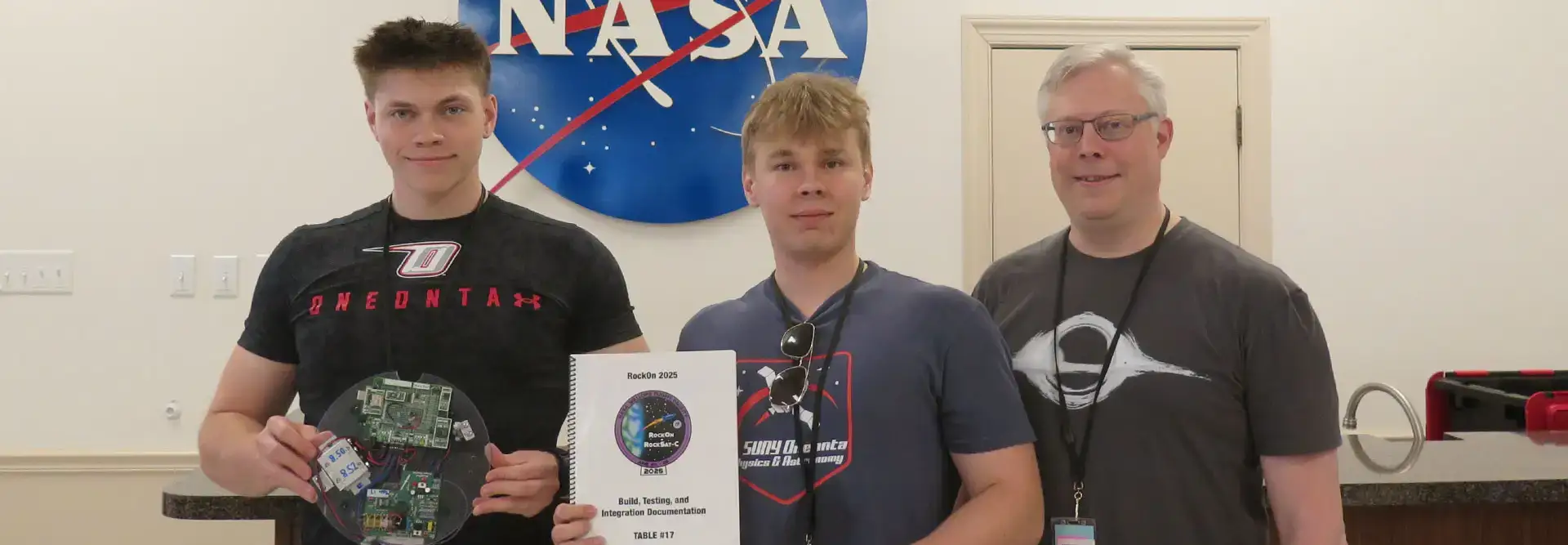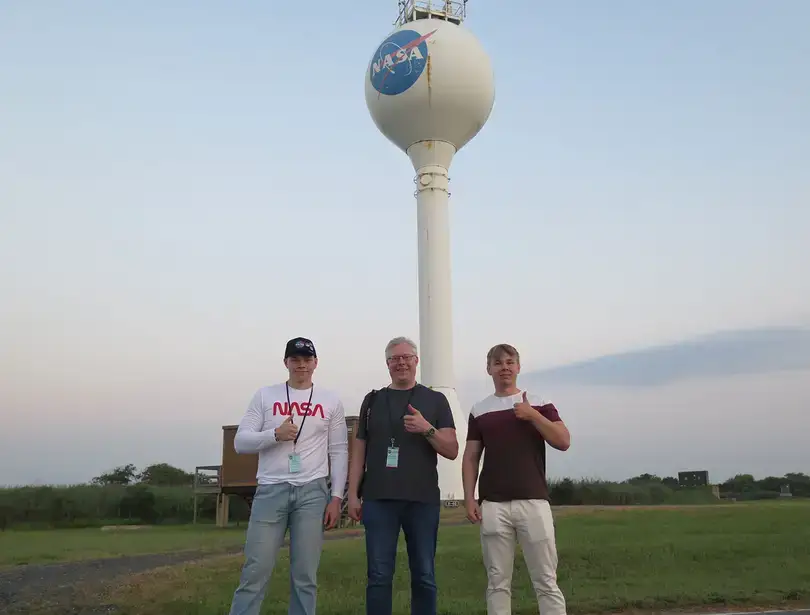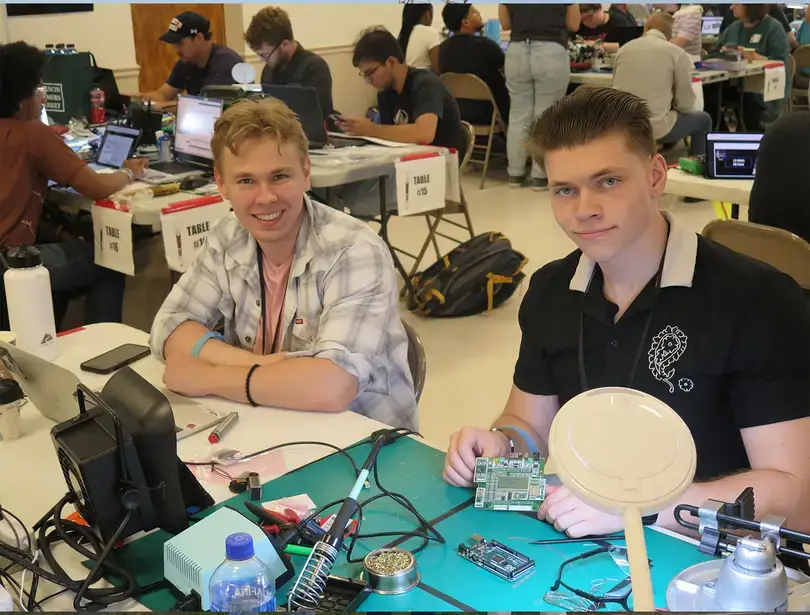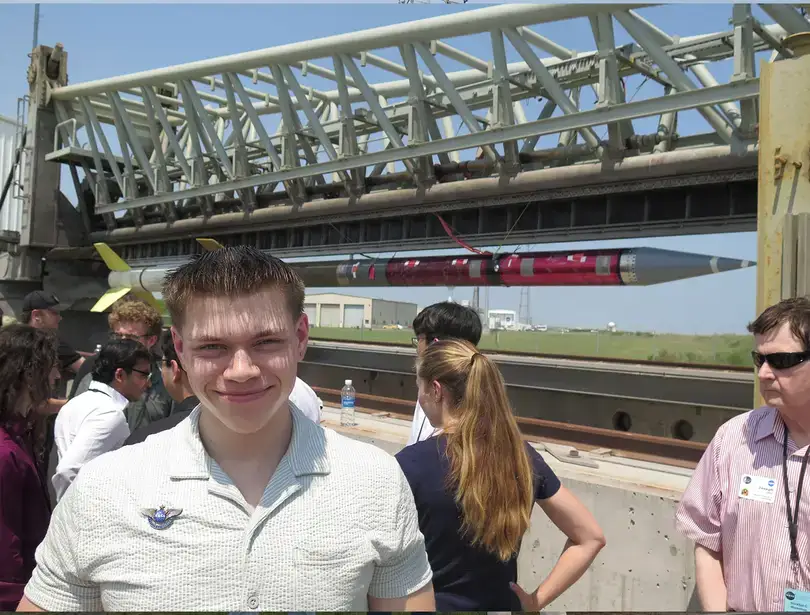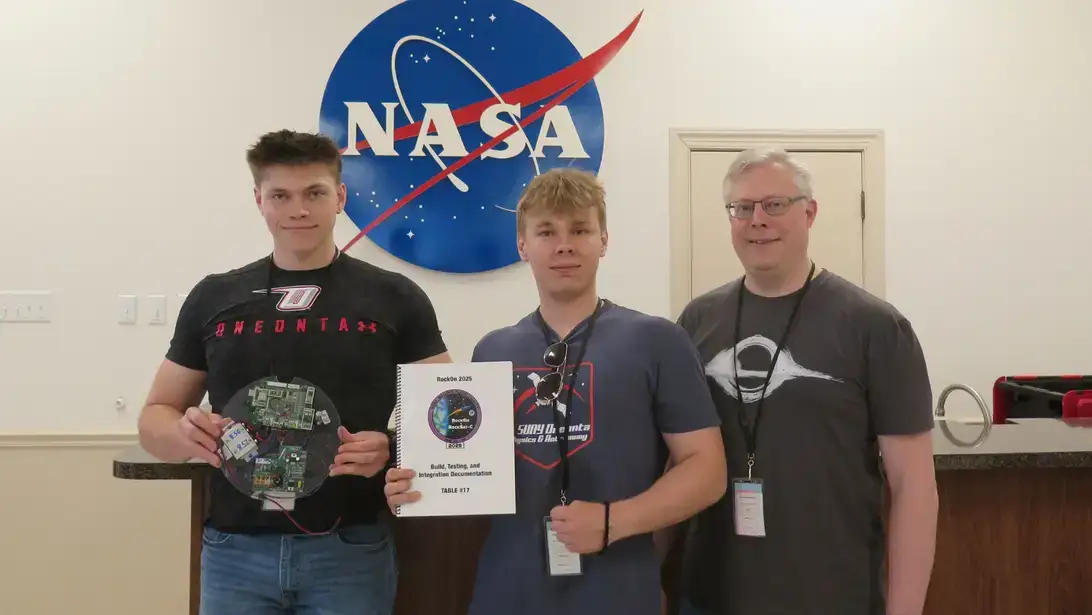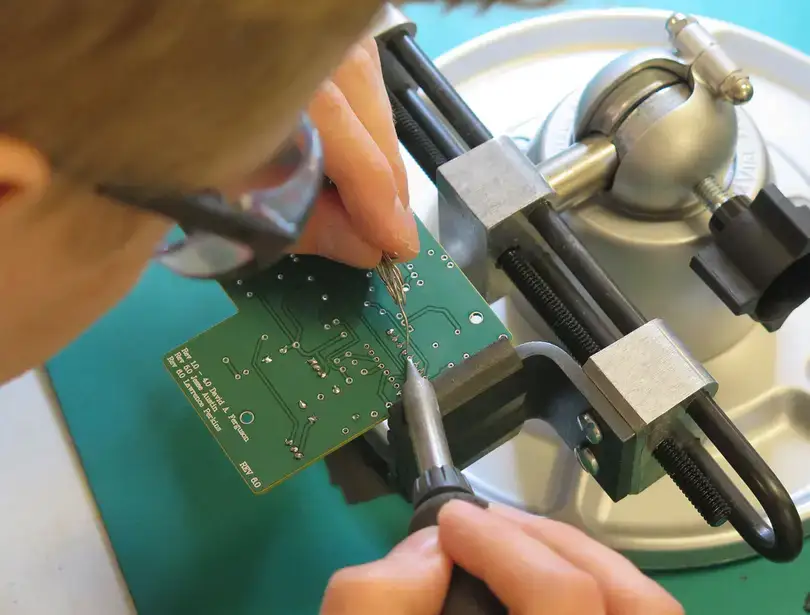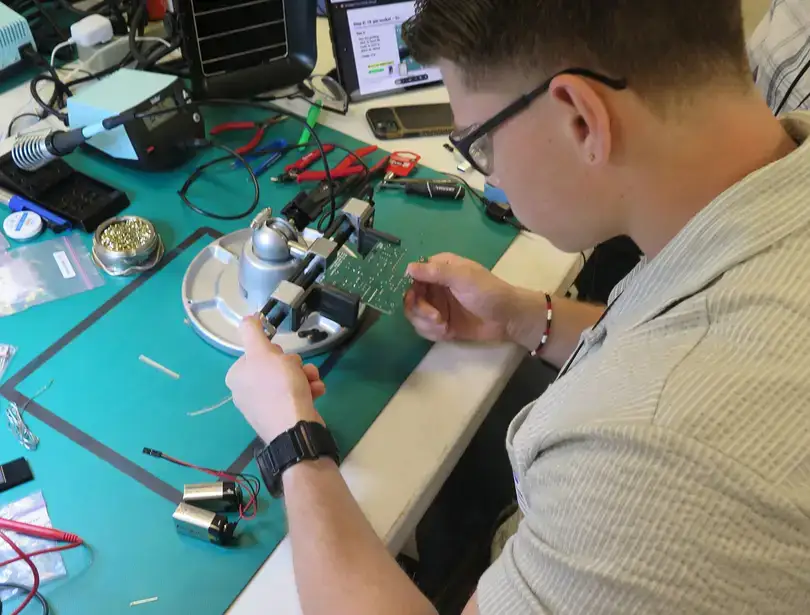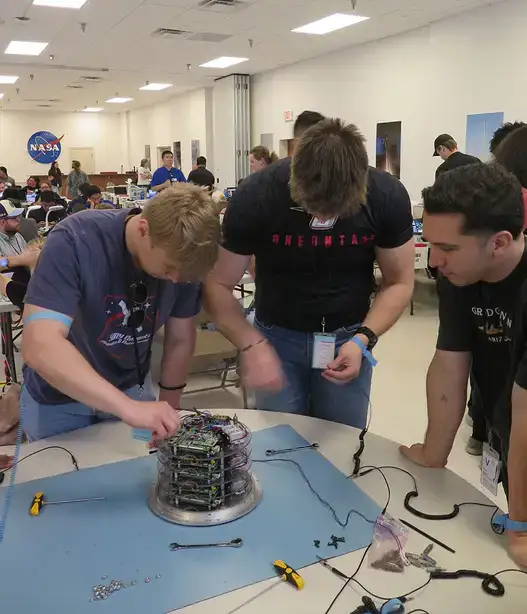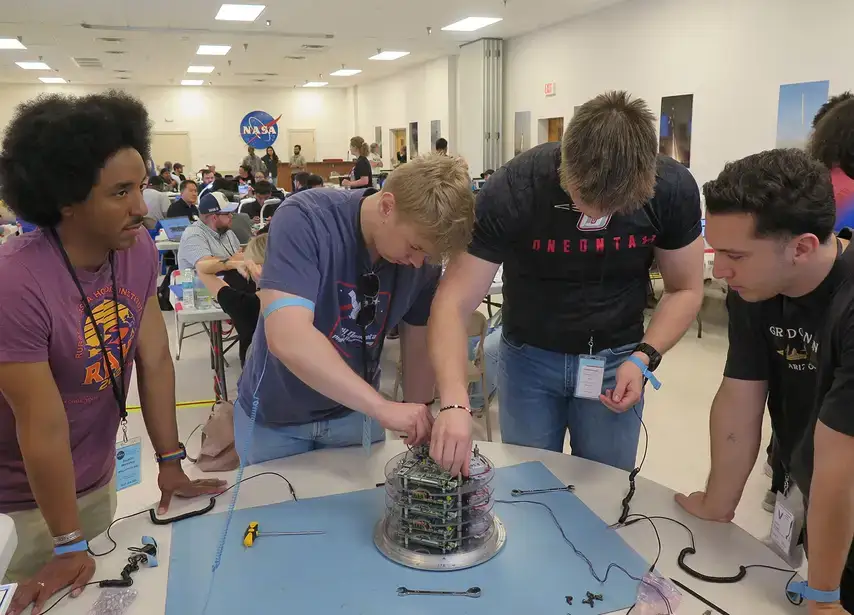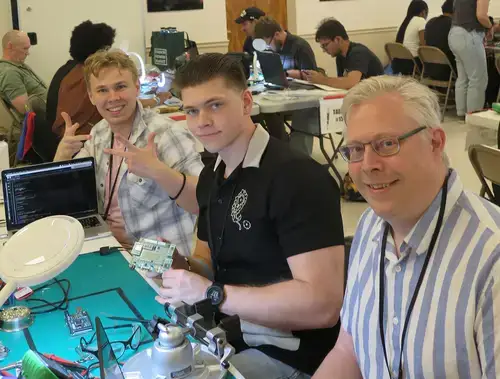
Two SUNY Oneonta Physics students reached new heights after spending a week at a NASA facility in June, launching their first rocket into space.
Students Ethan Biles and Jack Millen took their education beyond the classroom by joining Associate Professor of Physics and Astronomy Joshua Nollenberg at NASA’s Wallops Flight Facility. Located on Virginia’s eastern shore, Wallops is home to NASA’s annual RockOn! workshop, an immersive program where college students and faculty collaborate to build scientific instruments, attach them to a rocket and launch the rocket into space.
Biles and Millen prepared for RockOn! weeks in advance as part of their Physics summer internship course. While NASA provided everything at the workshop from detailed instructions to hands-on assembly, Nollenberg used the lead-up time to introduce the students to numerical methods for solving physics-based problems. After completing several simulations, the team turned its focus to understanding the rocket’s flight trajectory using equations of motion.
We have equations of motion that describe the position and also the angular position in polar coordinates relative to a launch site,” said Nollenberg.
"What we want to do is find the best trajectory to get into orbit that minimizes the amount of mass that’s used…so what we do is develop a Hamiltonian [technique] that gives us a series of cost functions that describe how much cost there is to changes in our position, our angle, our velocity, our angular velocity and also the mass loss.”
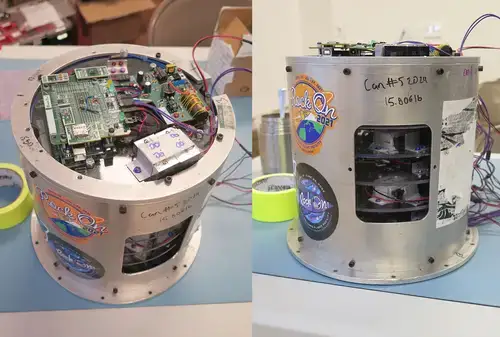
From Canister to Countdown
Although RockOn! is limited to just 28 teams, each consisting of two students and one faculty member, college and university groups from across the country compete for a spot in the program. Each team was responsible for assembling scientific instruments housed within a canister, which was then stacked alongside others to form the rocket’s internal structure, as provided by NASA. Once complete, a final outer “skin” was added to enclose the stacked canisters and seal the space-bound vehicle. Teams spent the first day, June 20, learning the skills they’d need for the week. They dedicated the next few days to assembly and concluded the week by watching their rocket launch on June 26.
For assembling the components, it was very similar to following a LEGO assembly manual,” said Millen.
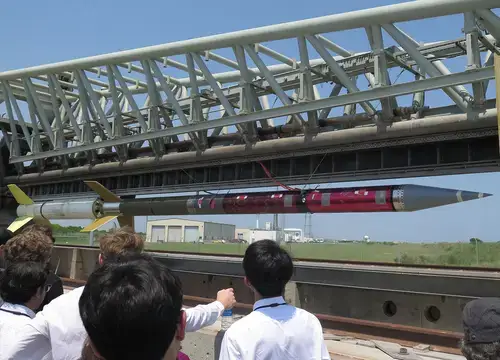
“At the end of each stage, we would await an inspection from the RockOn! Team to ensure we followed all directions correctly and that our components would be ‘launch-proof.’”
The rocket used for RockOn! was a two-stage Terrier-Improved Orion sounding model, measuring 40 feet in length and capable of traveling at about 1000 meters per second. Sounding rockets are unmanned, suborbital vehicles designed specifically for scientific research. After the rocket touched down, Biles, Millen and Nollenberg recovered their equipment to collect data on pressure, temperature, acceleration, gyroscopic movement, magnetism, humidity and orientation.
My favorite part of the RockOn! experience would be soldering the circuits. I've always had an affinity for electronics and circuitry,” said Biles.
“The feeling of launching a rocket was breathtaking. The joy you get from seeing your labor in space is something else.”
Two SUNY Oneonta students, Jack Millen and Ethan Biles, gained an experience unlike any other recently.
Learning Beyond the Launchpad
Nollenberg selected Biles and Millen to participate in RockOn! based on their strong academic performance, but the program also served as an opportunity for growth. They deepened their understanding of numerical methods, learning to model rocket flight, simulate heat transfer and solve engineering optimization problems. These skills are essential for predicting how their electronics would perform under real-world conditions.
While Biles and Millen worked from their strengths, they also developed new problem-solving skills, especially in debugging code. At first, they were surprised by how often errors occurred in longer programs, but they quickly adapted.
They grew a ‘weakness’ in the sense that they anticipated that they would be spending just a little bit of time debugging,” said Nollenberg.
“They built up a lot of intuitiveness to hunt down where the mistakes might be in the code when things were working incorrectly. They knew there might be a mistake, and that was okay. You just find a mistake and fix it, and that’s something I saw grow a lot during that process.”
Biles and Millen received funding for their internship course through the Experiential Learning Center and the National Science Foundation.
